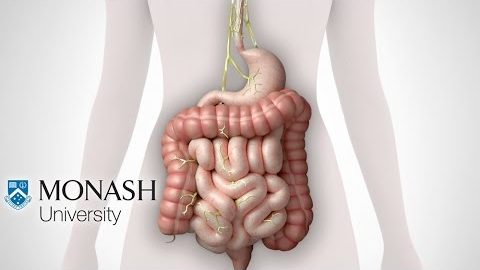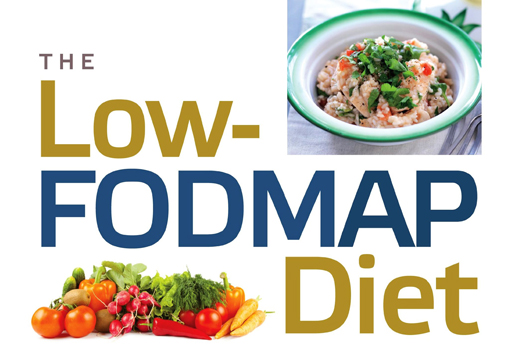
Do you suffer from the occasional bout of gastro-intestinal distress? Most people do, and at best find it to be uncomfortable and discomfiting.
At times, that gastro-intestinal distress can flare up to such an extent, a person becomes bed-ridden, as was woefully the case in February and March with VanRamblings, in the process gravely depleting one’s energy.
Some years back, research scientists at Melbourne, Australia’s Monash University developed an eating regimen called the “low FODMAP diet”. Simply eliminating and reducing specific, high FODMAP foods proved to be such a salutary resolution to the alleviation of gastro-intestinal distress in patients with digestive disorders that many years later, the low FODMAP diet has become the default treatment for most digestive disorders.
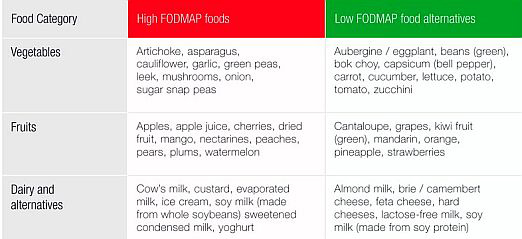 High FODMAP foods are not well tolerated by most people’s digestive system, and should certainly not be consumed by persons who suffer with digestive disorders, whereas low FODMAP foods are well tolerated, lessening or even eliminating gastrointestinal distress
High FODMAP foods are not well tolerated by most people’s digestive system, and should certainly not be consumed by persons who suffer with digestive disorders, whereas low FODMAP foods are well tolerated, lessening or even eliminating gastrointestinal distress
FODMAP is an acronym that stands for Fermentable Oligosaccharides Disaccharides Monosaccharides and Polyols.
In plain language?
FODMAPs are specific carbohydrates that are poorly digested by the vast majority of people (that’s you and me). Since these foods are not absorbed by the body, these short chain, sugar-laden carbohydrates travel through the digestive tract where they become fermented, resulting in painful gastro-intestinal distress, severe lower abdominal pain and discomfort, bloating, inflammation and a range of bacterial disorders that cause severe gastric distress in a person’s digestive system, more often than not resulting in discomfiting stomach cramps, bloating and problems with a person’s elimination system. In other words, not a lot of fun.
Twenty years ago, at the strong suggestion of our family physician, we eliminated dairy from our diet (probiotic lactose free yogurt, and Daiya coconut cream yogurt are just fine, though). Brad, our doc for the past 36 years, has also long been on our case to eliminate wheat from our diet — which we’ve now done, fortuitously and much to the benefit of our health.
We’re now consuming products, and baking and cooking at home with foods made with buckwheat (there’s no wheat in it!), brown rice, tapioca, almond and other non-wheat flours. We made a great, fluffy Strawberry Cinnamon Dutch Baby (with organic brown rice flour, eggs, raw turbinado sugar, and almond milk) yesterday morning for breakfast — mmmm, good.

Here’s a pdf of the definitive list of low and high FODMAP foods.
A month ago, VanRamblings had never heard of the low FODMAP diet (you’ll want to watch the Monash University produced video available in the preceding link). Fortunately, VanRamblings’ friend (and saviour, as it happens) Maureen Bayless — we’ll be writing much about Maureen in the months to come, given her pivotal role in seeing us through our seven month cancer journey back in late 2016 and early 2017 (quite simply, we wouldn’t be here without her) — came to our rescue with information on and a suggestion to adopt the low FODMAP diet (which had worked wonders for friends of hers, she said), and one month later, our energy has returned and the symptoms of our digestive disorder have been reduced by 80%; most days, anyway. We really are feeling much, much better.
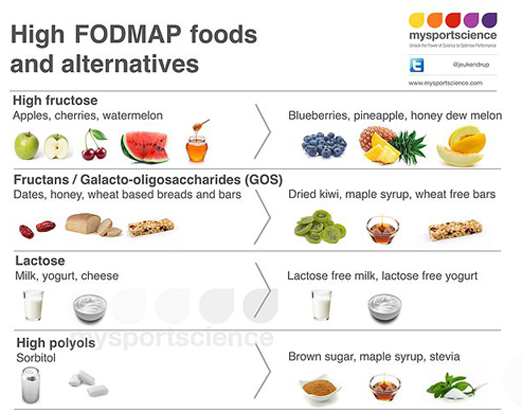
All and all, the low FODMAP diet has been a snap to adopt, resulting in little change to our daily eating habits. Oatmeal — love it, and that’s still on the menu. Peanut butter on rice cakes. Almond milk rice pudding made in our Instant Pot (which, by the way, is on sale for half price at Best Buy this week, with the sale ending tomorrow, so you’ll want to rush right out to acquire this must, must, must, must have kitchen appliance).
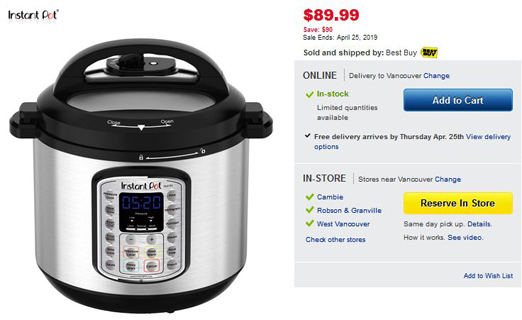 The latest 10-function (with sous vide!) Instant Pot on sale at Best Buy til Thursday
The latest 10-function (with sous vide!) Instant Pot on sale at Best Buy til Thursday
Cantaloupe, pineapple, strawberries (organic, of course, cuz non-organic strawberries are at the top of the Environmental Working Group’s Dirty Dozen list of pesticide-ridden, cancerous foods), blueberries and every other berry, save blackberries, are also on the approved low FODMAP list.
There are a great many low FODMAP beverages that are readily available. Lots of approved low FODMAP sweeteners are also on the list.
SPUD.ca have hundreds of gluten free / low FODMAP foods available. Save On Foods carries dozens of gluten free products, and has in fact dedicated a whole long aisle and refrigeration case to gluten free and low FODMAP foods. The same is true for Real Canadian Superstore, and most bulk food stores (for years, we’ve visited regularly at Kitsilano Natural Foods, now located at 1st Avenue and Yew, open 365 days a year, with a friendly staff).
We sorta miss apples, and have found a way to get around not being able to eat garlic (which we love!) and onions — most recipes that require garlic and onions also require oil, so we just cook the garlic and onions in the oil, infusing the oil with the taste we love, then remove these allium foods. It’s a small price to pay to not eat celery, cauliflower, and some mushrooms — when, in fact, if one is careful, one can eat small amounts of each of these foods, including wheat-based foods (but only one slice of bread a day).
Still, long term use of the low FODMAP diet is not recommended, even by those who developed the diet at Monash University, and as you’ll read in the article by respected holistic nutritionist, Julie Daniluk.
In fact, Monash University scientists make changes to their recommended list of low FODMAP foods weekly, while suggesting that one acquire their low FODMAP app to stay on top of their latest findings, and as a helpful and necessary aid when out grocery shopping.
Their scientists also recommend adding back high FODMAP foods, one by one, after 8 weeks on the diet to determine their impact on your health.
Monash University scientists are also big proponents of adopting a vegan diet, and eliminating sugars, as Ms. Daniluk recommends. As a supplement to the low FODMAP diet, VanRamblings’ doc also recommends a regimen of Align Probiotic, should one’s digestive disorder rear its ugly head.
So that’s what been happening on the health front in VanRamblings’ life since the beginning of the year. Fortunately, we’re now feeling much better, and as we’ve written earlier, as long as our health holds out — and we’re doing pretty darn good, we think — our intention is to continue to publish daily on VanRamblings through the end of June, more sporadically in the summer, while ramping up our federal election coverage full steam ahead throughout the months of September and October, until year’s end.
